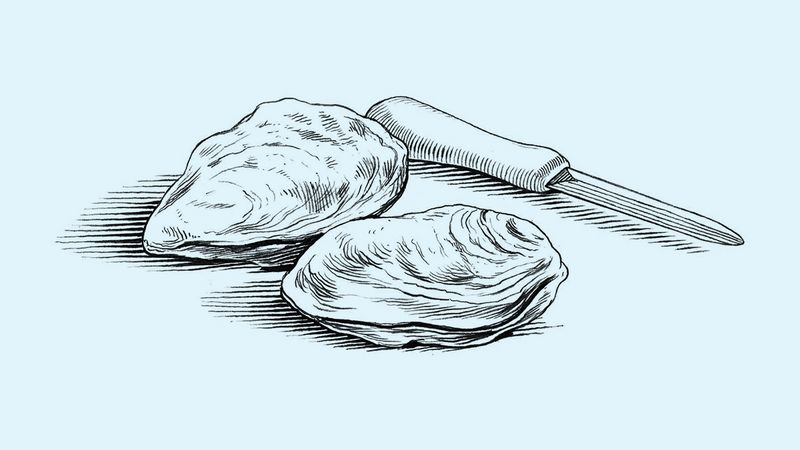THE JOURNAL

Illustrations by Mr Joe McKendry
The summer may pretty much be over, but take solace by slurping these seafood delicacies, and learning how to open the shells yourself.
We’re sorry it’s now September, and you’ll have to go back to work, or school, or, if you’re one of those men of leisure who attend neither, at least lose all your best lunch buddies to their respective nine-to-fives. On the plus side, though, it will soon be perfectly acceptable and pleasant (read, not horribly, debilitatingly poisonous) to eat that most rarefied of seafood delicacies, the oyster. Now, perhaps you’re the guy who likes them to turn up, ready to eat on a giant silver dish, arranged in a circular fan as if mother nature got together with Mr Sandro Botticelli to work on a fast-food startup. But you may also be keen to get your hands dirty insofar as shucking the things is concerned. (This also makes you look both rugged and rather glamorous at parties, so is not to be sniffed at.) If this is the case, scroll down immediately, and refresh your knowledge with a classic MR PORTER guide, originally written for the very first issue of The Journal by Mr Anthony J Pane, a master shucker known for his work at Seattle’s trendy oyster bar The Walrus and Carpenter, who now heads up regular oyster nights at the Hotel Albatross.

A STEP-BY-STEP GUIDE
**Things you’ll need:
Oyster knife, clean kitchen towel, rubber gloves, ice and a serving tray**

Once you have your oysters, it is necessary to care for them diligently before opening and eating them – they are live shellfish, after all. First, rinse your oysters in cold running water and scrub them if they are really dirty. If you are not shucking them immediately, store them in the refrigerator in a perforated container with a wet towel and ice covering them until you are ready to use.


Insert the knife into the hinge of the oyster gently. Once the tip is inserted about a quarter of an inch, twist the knife to pop the seal. The adductor muscle, which holds the shells together, is located in the upper right quadrant. To cut the adductor muscle, follow the contour of the top shell with the knife, cut through the muscle and remove the top shell.

Wipe out any grit from the bill of the shell and check for shell fragments around the hinge. To cut the adductor muscle on the bottom of the shell, guide the knife under the oyster from the top and slice the muscle, keeping the oyster intact and preserving as much of the oyster liquor as possible.

Serve on ice with your favourite dry white wine, champagne or stout. Typical oyster condiments are lemon, mignonette and horseradish, but use them sparingly.
Some common mistakes:
- Rushing it: not taking the time to clean out any shell fragments left in the oyster can leave your guests spitting.
- Making a mush of it: it is very important to keep the oyster meat fully intact so it doesn’t appear to be fresh from the blender.
- Letting go: a firm grip on the oyster and the knife will keep you out of the Emergency Room.
- Losing hope: remember that you won’t be an expert shucker after your first day. Shucking oysters can be rather humbling but, like anything, the more you shuck, the easier it will get.